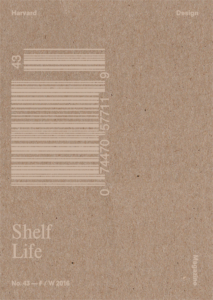Repeat
“Pete and Repeat were sitting on a fence. Pete fell off. Who was left? Repeat. Pete and Repeat were sitting on a fence. Pete fell off. Who was left? Repeat. Pete and Repeat were sitting on a fence. Pete fell off. Who was left? Repeat. . . .”
— Bruce Nauman, Raw Materials (2004)
I recently came across this text by the artist Bruce Nauman while researching textiles. The words are based on an old children’s joke, and through verbal repetition Nauman builds a lexical fabric that emphasizes and expands the meaning of the words. I was struck by the similarity between lingual repetition and the kind of repetition found in textiles, where woven patterns create larger swaths of cloth.
In a plain weave—the oldest, most common weave—the warp (the longitudinal yarn) is crisscrossed by the weft (the yarn woven between): over, under, over, under, over, under. The outcome is grid-like in appearance. In a twill weave, each weft floats over one or more warp threads before crossing back under one or more warp threads: over, over, under, under, over, over, under, under, over, over, under, under. The outcome is a diagonal pattern.
Modern textile manufacturing was born in 1801 with the first demonstration of the Jacquard loom in Paris. The loom’s binary card input was a precursor to digital computation and storage. Each hole in these cards dictates whether a Bolus hook is engaged, which in turn dictates whether the warp falls above or below the weft. The card stores a pattern, thus making textile production repeatable and industrial. The holes give specific binary input—1 0 1 0 1 0, which translates to over, under, over, under, over, under—and this input is illustrated in the interplay of warp and weft. The resulting textile is thus a depository of information and structure; in a sense, it wears what it stores.
Over time, textile patterns take on cultural meaning. For instance, in the West, the plain weave with a visible checker pattern was used on the arms of de Warenne, Earl of Surrey, during the medieval period; some 400 years later, during the settlement of the American Midwest, the pattern reappeared on horse racing flags (and subsequently became the finish line ag for modern car racing); in the mid-20th century, designer Alexander Girard used the checker pattern on furniture; and in the 1980s, skateboarders began donning the pattern on their checkered Vans. In each case a new layer of cultural meaning is stored in the textile.
In her book Weaving the Word: The Metaphorics of Weaving and Female Textual Production (1994), Kathryn Sullivan Kruger links ancient textile production, textuality, and gender: “By participating in the production of textiles . . . women took part in the first textual practices, recording their society’s stories, myths, and sacred beliefs in symbols woven or embroidered on their textiles. The scene they conveyed constituted society’s first texts.” Text is embedded in textile; and textile is text.
As composed, woven memory, textile is both ornament and shroud, and its functional characteristics are programmed into it. Twill weaves, for instance, are known for their resilient, durable, and cleanable structures, which are also resistant to wrinkling. For this reason, twill is the pattern of choice for denim, curtains, and neckties.
Beyond geometry and structure, materiality is also programmed into a woven textile via the yarn or fiber that is used. It is possible to make yarn in just about any material imaginable—wool, carbon, even steel—and such variation makes textile production a highly dynamic and adaptable manufacturing method. Combined with a textile’s weave, materials alter the language and structure of a textile, and each material also comes with its own cultural history. Wool, for instance, dates back to the first breeding of wooly sheep some 8,000 years ago in Iran, and the earliest known use of wool textile in Europe is traced to a Danish bog dated to 1500 BCE.
Returning to Nauman’s title, Raw Materials, I realize that he not only uses individual words as raw material but also larger patterns of words. This is how Nauman is able to turn a children’s joke into an artwork; and this is also how one culture can appropriate the same textile pattern as another, but for entirely different ends. Warp and weft are both words and grammar, and together construct durable yet contingent memory systems. Textiles are structures made of binary and linguistic information, material properties, and cultural histories, yet they remain open and allow us to build additional structures such as garments, furnishings, architecture, and further cultural histories.
Jonathan Olivares is a Los Angeles-based designer who works in the fields of industrial, spatial, and communication design. His designs engage a legacy of form and technology, and ask to be used rather than observed. Recent projects include the Olivares Aluminum for Knoll (2012); the exhibition “Source Material,” curated with Jasper Morrison and Marco Velardi (2014); Vitra Workspace, an office furniture showroom and learning environment (2015); and Aluminum Bench for Zahner (2015).
